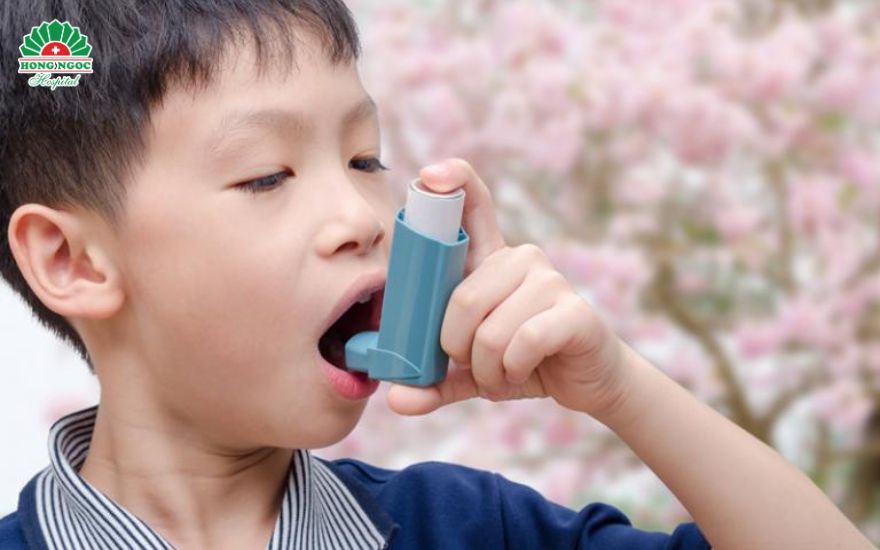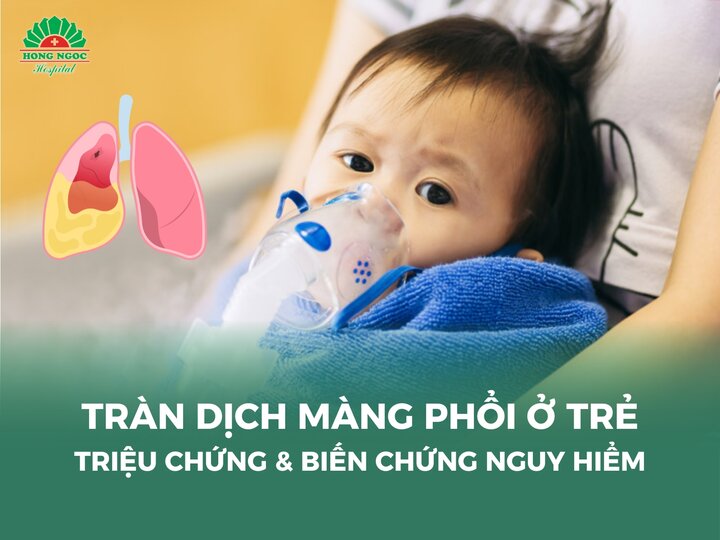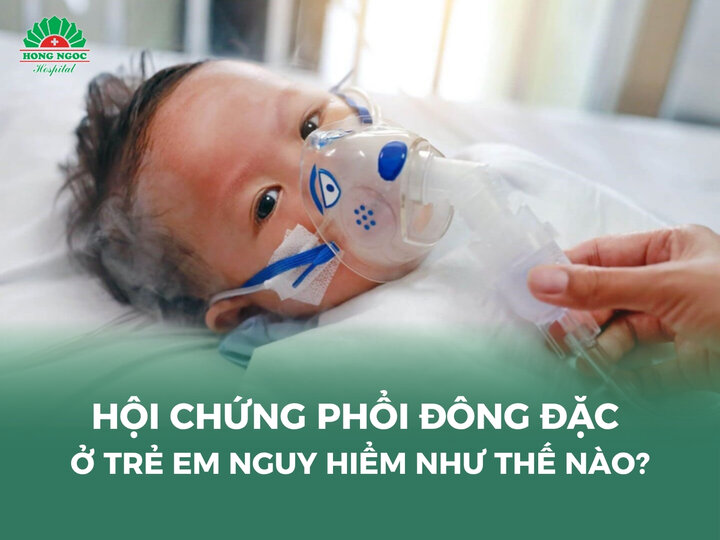Acute bronchial asthma is a sudden exacerbation of asthma that causes severe shortness of breath, wheezing, and carries a high risk of respiratory failure if not managed promptly. An attack may be triggered after a child is exposed to irritants such as dust, animal dander, cold weather, or viral infections. Early recognition of symptoms and appropriate management at home play a crucial role in reducing the risk of serious complications.
Symptoms of acute bronchial asthma in children
Acute bronchial asthma in children may progress rapidly, sometimes within minutes to hours after exposure to triggers such as dust, pollen, animal dander, sudden weather changes, or respiratory infections.
Shortness of breath and wheezing
Children experience difficulty inhaling or exhaling, especially when breathing out. Exhalation becomes prolonged, wheezy, and labored, often lasting 30 minutes to several hours, accompanied by chest tightness and a dry cough with sticky, white sputum. Attacks frequently occur at night or early morning, particularly with weather changes. Wheezing or whistling sounds can be heard, especially on auscultation, along with musical rales. The chest may visibly heave with each breath. Cause: Bronchospasm, mucosal swelling, and excessive mucus secretion narrow the airways, creating the characteristic wheezing sound.
Persistent cough
Coughing often occurs in episodes, especially at night or in the early morning. The cough may be dry or accompanied by thick, white mucus, and worsens with exposure to irritants such as smoke, animal dander, or cold air. Cause: Airway inflammation and mucus hypersecretion stimulate the cough reflex. While coughing helps expel mucus and irritants, persistent coughing further increases airway sensitivity.
Vomiting
Frequent coughing may trigger vomiting in children. Cause: Excessive mucus and airway irritation stimulate reflex pathways, leading to vomiting during severe coughing episodes.
Chest tightness or pain
Children may complain of chest pressure, heaviness, or pain, which worsens with deep breathing or coughing. Cause: Airway constriction and overuse of respiratory muscles during labored breathing create tension and chest discomfort.
Fatigue, irritability, and restlessness
Children may become fussy, irritable, or agitated. In later stages, they may appear lethargic, weak, or less responsive, with diminished crying or slow reactions. Cause: Oxygen deficiency affects the nervous system, leading to behavioral and neurological changes.
Rapid breathing and chest retractions
Respiratory rate increases (often above 40 breaths per minute). During inspiration, the lower chest, sternum, or area above the collarbone may retract deeply due to the use of accessory respiratory muscles. Cause: Narrowed airways force the body to increase respiratory effort to maintain adequate oxygen supply.
Reader may also be interested in:
- Signs of asthma in children. When should you take your child to the hospital?
- Is bronchiolitis in children contagious? How to recognize early warning signs
- How dangerous is pulmonary consolidation syndrome in children? Early recognition through the following warning signs
Cyanosis of lips and extremities
The skin, lips, and fingertips may appear bluish or pale. Children may also sweat profusely and look ashen. Cause: Severe oxygen deprivation due to critically obstructed airways.
When to take a child to the emergency department?
- Breathing that is very rapid or abnormally slow, with pronounced chest retractions
- Cyanosis of the lips, fingertips, or generalized bluish discoloration of the skin
- Lethargy, loss of consciousness, or no response when called
- Inability to speak, drink, or breastfeed due to severe shortness of breath
.jpg)
Immediate management of an acute asthma attack in children
An acute bronchial asthma attack in children causes airway obstruction, reducing the amount of oxygen delivered to the body. If not treated promptly, the child may develop severe respiratory failure, which can be life-threatening. Therefore, parents should:
Stay calm and help the child relax
- Take the child to a well-ventilated place, away from dust, animal dander, smoke, or other asthma triggers.
- Have the child sit upright and lean slightly forward (the “sitting forward” position) to help open the bronchi.
- Encourage the child to breathe slowly and deeply, avoiding excessive exertion.
Use fast-acting asthma reliever medication
- Salbutamol (Ventolin) in inhaler or nebulized form (through a machine). In severe attacks, it may be combined with Ipratropium Bromide.
How to use a metered-dose inhaler (MDI):
- Shake the inhaler thoroughly before spraying.
- Place the mouthpiece in the child’s mouth, ask the child to inhale deeply, then hold their breath for 10 seconds (if the child is old enough).
- For younger children, use a spacer to make inhalation easier.
- Give 2 puffs. If symptoms do not improve after 20 minutes, another 2 puffs may be given.
How to use a nebulizer:
- If a nebulizer is available, prepare the medication exactly as directed by the physician.
- Let the child inhale the mist for 5–10 minutes.
Important note: Do not increase the medication dose without a doctor’s instructions. If acute bronchial asthma do not improve after 2 inhaler doses or nebulizer sessions, the child must be taken to the hospital immediately.

Respiratory support if needed, to prevent severe oxygen deficiency
- If oxygen is available at home, administer 1–2 liters per minute via mask or cannula.
- If the child shows cyanosis or altered consciousness, take the child immediately to a medical facility for emergency oxygen therapy.
Take the child to the hospital
If the child has already used medication but does not improve after 2 inhaler doses or nebulizer sessions, or shows signs of severe respiratory distress—marked chest retractions, cyanosis, inability to speak, breastfeed, or drink water, lethargy, loss of consciousness, or temporary apnea—parents must bring the child to the hospital immediately for emergency care.
While on the way to the hospital, parents should:
- Keep the child in an upright sitting position, not lying down.
- Continue administering bronchodilator medication if necessary, according to the doctor’s instructions.
Acute bronchial asthma in children is a chronic disease that is difficult to cure completely. However, if properly controlled, children can still live healthy lives and minimize acute asthma attacks. The Pediatrics Department of Hong Ngoc General Hospital takes pride in being a leading unit in promptly updating long-term asthma prevention regimens according to GINA guidelines, helping children manage the disease effectively. Under the leadership of Nguyen Thuy Giang, MD, PhD – Head of the Pediatric Respiratory Unit, with more than 20 years of experience at the Pediatrics Department of Bach Mai Hospital and many years of in-depth research on bronchial asthma, the department prioritizes building personalized treatment regimens. This strategy helps children reduce dependence on rescue medications (corticosteroids), limit dangerous complications, significantly decrease acute asthma attacks and the risk of hospitalization due to acute bronchial asthma, thereby enabling children to remain healthy and confidently develop.
Note: The information provided in this article by Hong Ngoc General Hospital is for reference only and is not a substitute for professional medical diagnosis or treatment. For an accurate assessment of your child’s condition, please visit a hospital for direct examination and consultation with a physician to receive the most appropriate treatment plan.
PEDIATRICS DEPARTMENT – HONG NGOC GENERAL HOSPITAL
- 55 Yen Ninh, Ba Dinh, Hanoi
- No. 8 Chau Van Liem, Nam Tu Liem, Hanoi
- 3rd Floor, Building B, Tasco Mall, 07–09 Nguyen Van Linh, Long Bien, Hanoi
- 10th Floor, Keangnam Landmark 72, Pham Hung, Hanoi
- 1st Floor, TNL Plaza Goldseason, 47 Nguyen Tuan, Thanh Xuan, Hanoi
- 1st Floor, HPC Landmark 105, To Huu, Ha Dong, Hanoi
- Floors 1–3, Kosmo Tay Ho, 161 Xuan La, Bac Tu Liem, Hanoi
Free consultation and fast appointment hotline: 0947.616.006
>>> Stay updated with more useful information at: Pediatrics Department – Hong Ngoc General Hospital














